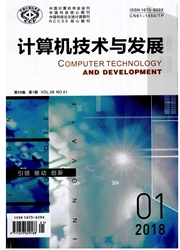

 中文摘要:
中文摘要:
按照全要素能源效率的概念,重点考虑电能投入约束,构造了基于电能节约的E-DEA模型,其目标函数为极大化产出比例和电能投入比例之差,约束条件中除考虑一般投入量约束外,还同时强调电能投入径向节约和产出径向增加。根据模型最优解,给出了相应的有效、非有效、弱有效、用电规模收益状态的判断准则,以及相应于不同有效性情况下决策单元的改进。以合肥市通用制造业规上企业所属21个行业为研究对象,从第二次经济普查中选择年均资产、从业人员、电力、非电力能源、二氧化碳排量为投入指标,主营业务收入为产出指标,对行业电能利用效率进行实证分析,通过分析潜在电能可节约量和主营业务收入可增加量,明确了各行业改进目标。
 英文摘要:
英文摘要:
According to the concept of total factor energy efficiency, the E-DEA model based on electrical energy saving is structured mainly considering power input constraint. The objective function is maximizing difference between the output ratio and the electrical energy input ratio. In the constraint conditions, reducing the radial electrical energy input and increasing radial output are also stressed in addition to general constraints. According to the model optimal solutions, the judgment criterion of efficiency, inefficiency, weak efficiency and electricity scale returns status is given and decision making unit improvement corresponding to various effectiveness is defined. Take 21 general equipment manufacturing composed by the enterprise scale above in Hefei as example, average annual assets, employees, electric power, other energy and carbon dioxide emissions are chosen as input index, main business income as output index from the second national economic census, and their electrical energy utilization efficiency are empirically analyzed. By analyzing the electrical energy utilization efficiency, potential power quantity can being saved and potential main business income can be increased, and the improve- ment goals of each industry are obtained.
 同期刊论文项目
同期刊论文项目
 同项目期刊论文
同项目期刊论文
 A Neuroeconomics Analysis of Investment Process with Money Flow Information: The Error-Related Negat
A Neuroeconomics Analysis of Investment Process with Money Flow Information: The Error-Related Negat Collaborative Case-Based Reasoning and itsApplications in Desingning Circuit SystemsA Framework on t
Collaborative Case-Based Reasoning and itsApplications in Desingning Circuit SystemsA Framework on t Visualization and Quantitative Study in Bibliographic Databases: A Case in the Field of University-I
Visualization and Quantitative Study in Bibliographic Databases: A Case in the Field of University-I The research on ARMA prediction model based on EMD and the application in the city bus traffic predi
The research on ARMA prediction model based on EMD and the application in the city bus traffic predi 期刊信息
期刊信息
